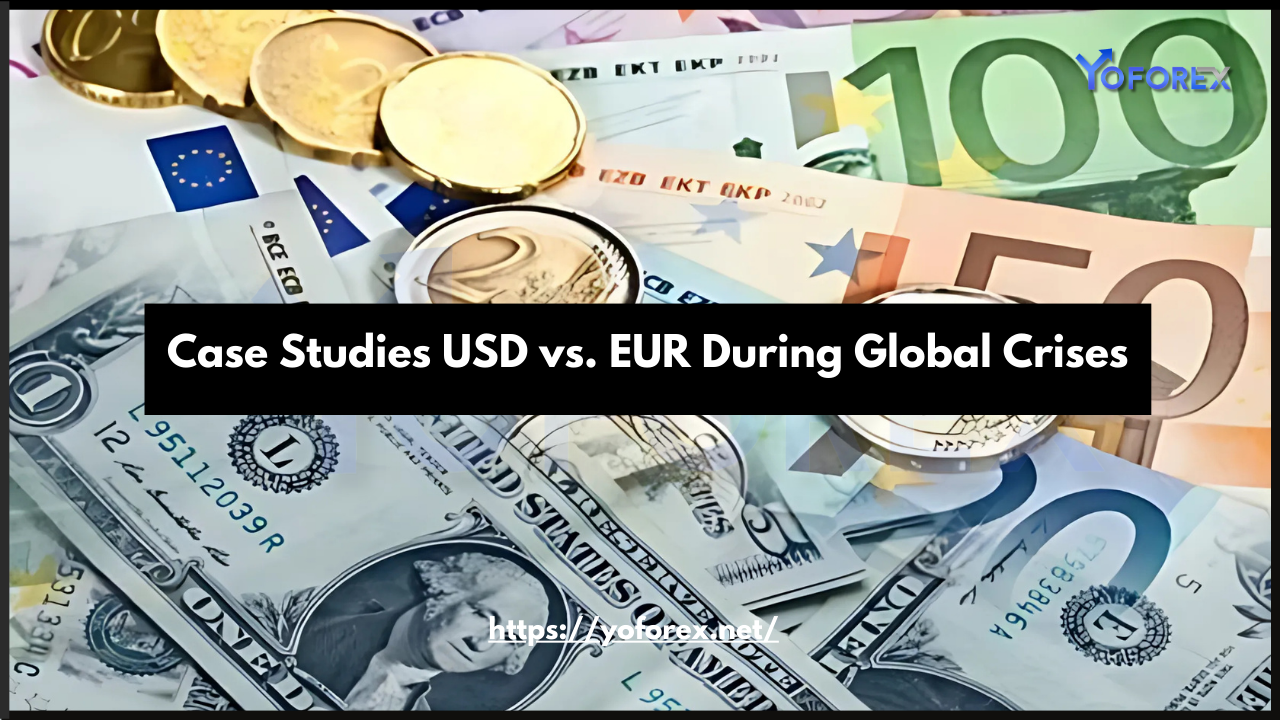The global financial system has witnessed several crises over the past decades, with the US dollar (USD) and the euro (EUR) playing pivotal roles in shaping economic outcomes. This blog explores the dynamics between the USD and EUR during two major crises: the 2008 Global Financial Crisis (GFC) and the Eurozone Sovereign Debt Crisis. By examining their performance, policy responses, and long-term implications, we can better understand how these currencies interact during periods of economic turmoil.
The 2008 Global Financial Crisis
1. The Role of Private Debt and the USD
The 2008 GFC originated in the US, driven by excessive private debt and speculative lending practices. Rising private debt initially fueled demand, but its collapse in 2008 triggered a severe economic downturn. The correlation between private debt growth and unemployment was stark, with a -0.92 correlation observed between 1990 and 2012212.
The Federal Reserve (Fed) responded with aggressive monetary policies, including quantitative easing (QE), which injected liquidity into the economy. By 2014, US banking reserves had surged to 50 times their pre-crisis levels, reflecting the Fed’s commitment to stabilizing the financial system6.
2. The Eurozone’s Response
While the Eurozone was initially less affected by the GFC, its banking sector suffered due to exposure to US subprime securities. The European Central Bank (ECB) implemented liquidity injection programs, such as the Long-Term Refinancing Operation (LTRO), to support banks. However, the ECB’s approach was more conservative, focusing on maintaining price stability and avoiding inflation6.
3. Currency Performance
During the GFC, the USD strengthened as investors sought safe-haven assets. In contrast, the EUR faced pressure due to the Eurozone’s slower recovery and banking vulnerabilities. This divergence highlighted the USD’s dominance as a global reserve currency614.

The Eurozone Sovereign Debt Crisis
1. Origins and Impact on the EUR
The Eurozone Sovereign Debt Crisis, which began in 2009, exposed structural flaws in the euro project. Countries like Greece, Ireland, and Spain faced unsustainable public debt levels, leading to a loss of investor confidence. The crisis tested the Eurozone’s ability to manage asymmetric shocks and raised questions about the euro’s long-term viability14.
2. Policy Responses
The ECB introduced measures like the Securities Market Programme (SMP) and Outright Monetary Transactions (OMT) to stabilize sovereign bond markets. However, these programs were often sterilized, limiting their effectiveness. In contrast, the Fed’s QE programs were more expansive, contributing to a faster recovery in the US614.
3. Currency Dynamics
The EUR weakened significantly during the crisis, reflecting concerns about the Eurozone’s fiscal stability. Meanwhile, the USD remained resilient, benefiting from its status as a global safe-haven currency. This divergence underscored the challenges of maintaining a unified currency in a politically fragmented region1416.
Comparative Analysis
1. Policy Effectiveness
The Fed’s proactive approach during the GFC and the Eurozone crisis demonstrated the advantages of a centralized monetary authority. In contrast, the ECB’s conservative stance and institutional constraints limited its ability to respond effectively614.
2. Structural Differences
The US benefits from a deep and liquid bond market, which facilitates monetary policy transmission. In contrast, the Eurozone’s reliance on bank credit and fragmented bond markets complicates policy implementation614.
3. Long-Term Implications
The crises highlighted the USD’s enduring dominance in the global financial system. While the EUR has challenged the USD’s hegemony, structural flaws and political fragmentation limit its ability to fully replace the dollar16.
Conclusion
The 2008 GFC and the Eurozone Sovereign Debt Crisis revealed critical differences in how the USD and EUR respond to global crises. The Fed’s aggressive policies and the US’s robust financial infrastructure enabled a faster recovery, while the ECB’s conservative approach and the Eurozone’s structural challenges hindered its response. These case studies underscore the importance of institutional flexibility and policy coordination in navigating global crises. As the global financial system evolves, the interplay between the USD and EUR will continue to shape economic outcomes, offering valuable lessons for policymakers and investors alike.

